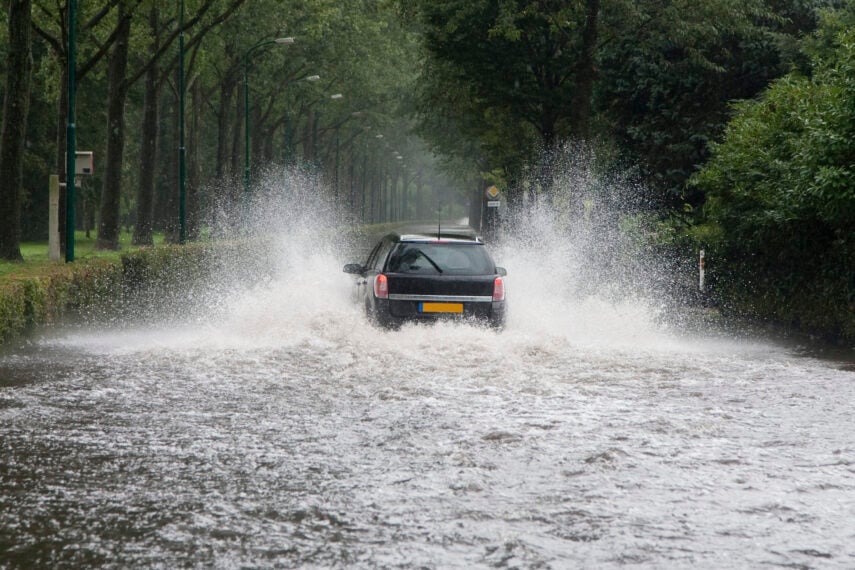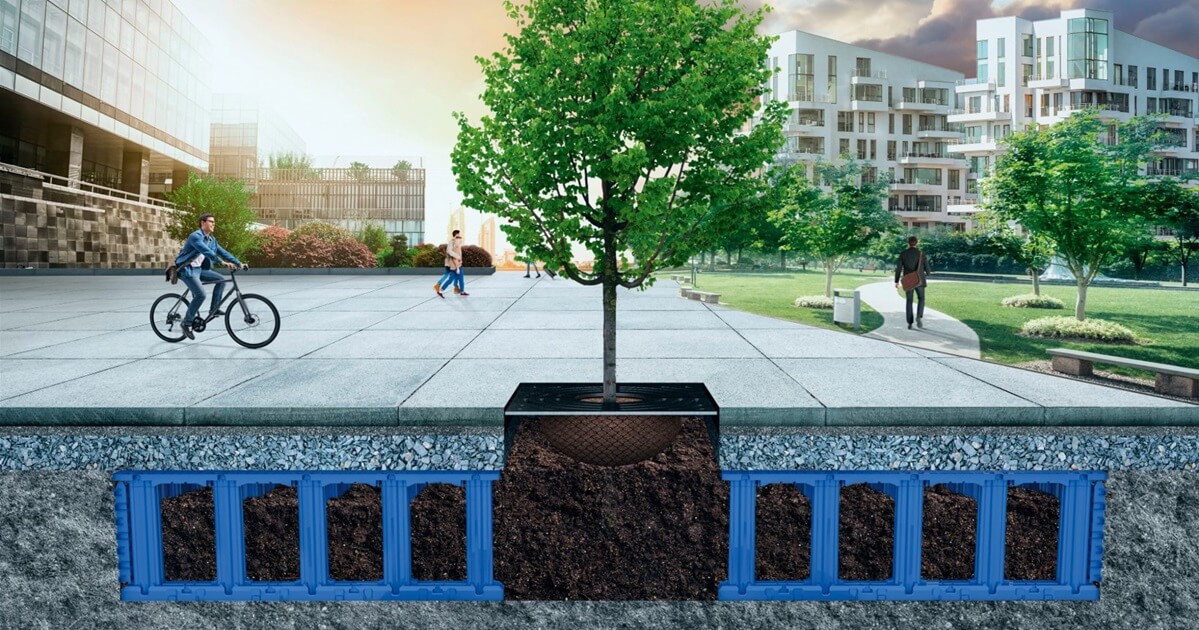6
min read time
2021-07-11 08:52:54
Climate change is a major issue facing governments, businesses, and individuals. As highlighted at the recent COP26 conference, it is now vital and urgent that we find ways to mitigate and adapt to climate change to avoid the devastating impact. They include flooding caused by rising sea levels and more frequent weather events, water and food shortages, loss of biodiversity and increasing temperatures causing risks to health.
SuDS, or sustainable drainage systems, are generally considered an effective method of flood prevention with various other benefits, including improved water quality, the creation of biodiversity, and amenity. But could they also help mitigate and adapt to the effects of climate change? They could provide some help in both the drive to reduce carbon and to adapt our built environments to climate change.

"Car driving through a flooded street"
SuDS are used to manage surface water by using modern drainage systems that mimic natural ones. There is no one-size-fits-all approach to SuDS, with solutions varying, including solutions tailored to more natural areas, like ponds or swales, and solutions tailored to more urbanised areas, like permeable surfaces and infiltration tanks. Both options work towards the same goal of sustainably managing the surface water at the source and reducing the pressure on the sewage network, which can become overwhelmed during periods of high rainfall causing flooding.
SuDS, in the form of man-made still bodies of water, have a range of benefits that work toward the common goal of managing surface water, but also other areas, including the advancement of biodiversity in surrounding areas. This solution involves the collection of high amounts of rainfall and surface water from other outlets, before beginning the gradual process of allowing this water to soak into the ground.
Extreme weather and flash floods are not just an issue in tropical regions, they are also becoming more likely closer to home in Europe. Earlier this year, severe flooding in the Benelux region and Germany caused the banks of rivers to burst, and towns and villages became unrecognisable with the tragic loss of more than 129 lives. A study found that extreme fatal incidents like this are now nine times more likely due to climate change.
Defence mechanisms, like improved flood defences, are one way to prevent further tragic incidents, but SuDS could also play an important role in the solution. With rainwater levels growing each year, there need to be more places to store and collect this water – various sustainable drainage systems could be part of the answer. SuDS can collect, attenuate, filter, and slow the flow of surface water, which reduces the pressure on drainage systems during periods of high rainfall.

Flood risk management is one of the many benefits of SuDS, but if designed correctly, it will improve water quality. The ability to capture water for reuse and prevent pollutants and toxins from entering the water is also important as we adapt to climate change. With events of both flooding and drought becoming more common as temperatures rise, protecting water quality and water supplies will become more challenging. The use of combined sewer overflows (CSOs) that discharge sewage into water courses during periods of high rainfall has become a topic for debate in Parliament and the House of Lords recently.
Their use is controversial, but necessary to prevent household flooding when sewage systems become overwhelmed. This study published in Water Research in 2021 found that SuDS including Bioretention cells, rain barrels and green roofs showed a considerable reduction in CSOs, and concluded that the potential of SuDS in controlling CSOs is significant.
There is no doubt that SuDS alone cannot be responsible for the mitigation of climate change, but some studies and reports prove they can help with the mitigation process.
There are a number of possible ways that SuDS can help to reduce or offset carbon emissions, and therefore help in the drive to mitigate climate change. SuDS can reduce the need for water pumping and treatment, reducing energy usage. Urbanisation usually leads to the replacement of vegetation with dark impermeable surfaces that absorb and retain heat and prevent the retention of water. SuDS can help cool and shade buildings, reducing the need for air conditioning, and again reducing energy usage. They can also trap water, leading to cooling through evaporation. Finally, the plants and vegetation that feature in SuDS can absorb CO2, reducing atmospheric carbon.

A study carried out by the URSULA Project in 2011, found that the implementation of SuDS in urbanised areas in some scenarios contributed to a reduction of temperatures in the surrounding atmosphere where constructional development had taken place. This evident reduction of temperature in the surrounding atmosphere was active mitigation of climate change.
This operation on a large scale may be difficult to implement to make a significant impact, as SuDS using a more natural approach usually requires large amounts of space to be developed. However, the introduction of SuDS into urbanised areas could have an impact on reducing the surrounding temperatures, making a small step toward mitigating the climate change problem we face globally. This alongside the ability of SuDS to contribute to water quality while reducing flood risk, shows sustainable drainage systems are a possible answer for the future of living with climate change.